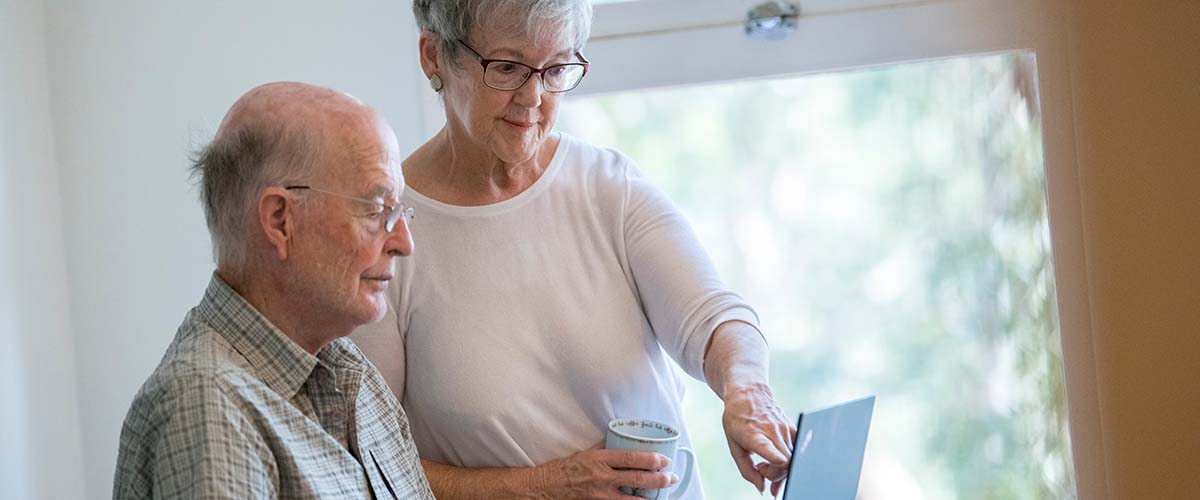Researchers at the University of Toronto are looking to the virtual world to improve the quality of life for those in palliative care.
Cosmin Munteanu, assistant professor at U of T Mississauga’s Institute for Communication, Culture, Information and Technology, and PhD student Sho Conte are exploring how virtual reality (VR) devices can be used to enhance people’s experiences.
The impetus for the study, funded by the Canadian Institutes of Health Research, came from Conte’s experiences as a volunteer at a Toronto hospice. During some of his pre-pandemic visits, Conte took along some VR equipment (one of his hobbies) to entertain clients. He found himself using Google Earth to explore places they wanted to visit – or revisit.
“The reception was incredible – super emotional and super effective,” Munteanu says, noting those in palliative care often have limited mobility and few opportunities to enjoy new experiences.
The lack of social participation has been exacerbated by the recent pandemic. Conte notes he hasn’t been able to see his client since March due to COVID-19.
“It’s a bit upsetting to me, just thinking about that, if I was in that situation,” he says.
VR may be a way to break through the social isolation – whether caused by the pandemic or the nature of palliative care itself – and open new opportunities to facilitate social participation.
“I see VR as a window into these virtual experiences that are immersive and very lived. It’s not as good as the real thing, but in light of their mobility challenges, it works really well,” Conte says.
It may also be a tool that helps provide a more holistic approach to end-of-life care.
“We have a very good palliative care system in Canada,” says Munteanu, although he notes there tends to be a medical focus.
“It’s the soft side that’s often neglected.”
With VR, patients can embark on virtual trips, share virtual travel experiences with family members, reminisce about the past and share stories while looking at Google Street View. VR could also give them a means to have an immersive experience, augment personal connections or even escape the confines of the hospice and meet others in a virtual setting.
The pandemic has put a temporary hold on exploring ways to put VR in the hands of palliative care patients because it’s not currently safe to work with such a vulnerable group. So, Conte has pivoted his research to focus on helping clinicians have difficult planning discussions with patients.
Studies show that 90 per cent of people want to have conversations about planning their care if things go badly, but only about 10 per cent have those conversations, Conte says. “Having conversations and planning before it’s too late is one of the biggest predictors of quality at end of life.”
He’s now turning to VR to help practitioners prepare for these emotionally charged discussions that happen too infrequently. Using a 3D chatbot that provides rich, simulated responses based on a serious illness conversation guide, medical students record themselves having a conversation about advanced care planning. They then review the conversation through VR, where they can see it from the other person’s perspective, giving them a tool for critical self-reflection, learning and training. The goal is to help caregivers gain the confidence to talk about sensitive issues.
Munteanu explains that the immersive technology could be used to develop more empathetic and more attentive listening skills that, in turn, help improve the social and personal aspects of palliative care.
“It’s not that people aren’t doing all they can,” he says. “[But]here are so many more opportunities to make it even better.”
Meanwhile, Munteanu’s Technologies for Aging Gracefully (TAG) lab is part of a three-year international research and development project that has received 1.5 million euros from the European Union’s Assisted Augmented Living to use of emerging technologies improve the quality of life of palliative care recipients, their family caregivers and professional care providers.
The studies are putting the U of T Mississauga’s TAG lab at the forefront of innovation.
“There’s a lot of good research on the medical side,” Munteanu says, but it’s time for everything else to catch up.








